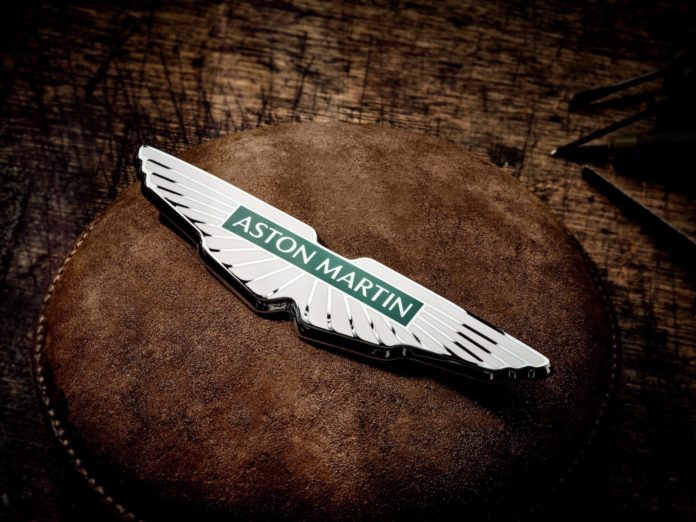As with all automakers worldwide, electrification, not internal combustion, powers Aston Martin’s future.
To signal the end of Aston’s fossil fuel era, the company is unveiling the DBS 770 Ultimate, a final flagship with a ferocious 759 horsepower. That’s quite a bit more than the “base” car’s 715 hp. The company says the DBS 770 Ultimate is re-engineered with a sharper dynamic focus and revised design. Only 399 will be built. More details are expected soon.
Being this is the final year of Aston Martins powered solely by internal combustion engines, the automaker plans to launch the 2024 Valhalla by the end of the year. The new model is Aston’s first mid-engine plug-in hybrid hypercar that will draw its power from an AMG-derived 4.0-liter twin-turbo gas engine paired with a plug-in hybrid system that generates a combined 937 hp. By 2030, Aston Martin expects its lineup to be fully electric.
So while Aston Martin powertrains will undergo a metamorphosis, the brand’s attitude will not.
A change in powertrains, not temperament
But the past 12 months have proven to be busy for the boutique British automaker.
In March, the British automaker announced it will build 333 final editions of the Aston Martin Vantage powered by Aston Martin’s 5.2-liter V-12 that develops 690 hp and 555 pound-feet of torque, even as it rolled out the new DBX707, which Aston declares is “the world’s most powerful luxury sport-utility vehicle.”
Then in May, the company replaced its CEO Tobias Moers, formerly of Mercedes-AMG, with Amedeo Felisa, the former CEO of Ferrari NV. In July, the automaker redesigned its famous winged logo as part of a strategic brand repositioning to lure new — younger — buyers to the iconic marque known for its racing prowess and as the ride of choice for the fictional British Secret Service agent James Bond — at least in cinema
In August, Aston Martin unveiled the DBR22, an open cockpit two-seater concept powered by a twin-turbocharged 5.2-liter V-12. It generates 705 hp and 555 lb-ft of torque, furnishing a 0 to 60 mph time of 3.4 seconds on its way to a top speed of 198 mph. “The DBR22 is a hot-blooded, purebred Aston Martin sports car full of speed, agility and spirit, and a machine that we think will be the basis of many of tomorrow’s icons,” said Aston Martin chief creative officer Marek Reichman at its launch.
A tumultuous history
If that seems riotous, the company’s history is even moreso, as the company filed for bankruptcy seven times in its history.
Lagonda was founded in 1899 and Aston Martin in 1913 by Lionel Martin and Robert Bamford. Initially, the company built race cars, not building its first Aston Martin passenger cars until 1923. The automaker would be run by a series of owners, and the company continued to race while producing production cars. Notably, it created the Aston Martin Atom just before World War II. Unlike any other Aston before it, the Atom’s aluminum body panels were attached to a tubular space-frame frame and powered by a 2.0-liter engine. It became the basis for many of Aston Martin’s postwar vehicles.
Once hostilities ended, the firm found itself in financial trouble. Help arrived in the form of David Brown, who merged Aston Martin with the failing Lagonda company in 1947. The Atom provided the basis for the firm’s new car, the DB1, while introducing a new Lagonda, designed under the supervision of W.O. Bentley, who was no longer associated with the car that bore his name. The new vehicle featured a fully independent suspension and a 2.6-liter twin-overhead-cam engine.
Despite decades of success on the track, Aston Martin withdrew from racing in 1964 as financial problems once more reared their head. They were saved after Aston Martin loaned two DB5s for the James Bond film “Goldfinger.” Demand exploded, saving the company. But by 1972, David Brown sold the company, which would see the company’s shares tossed back and forth among different investors. Finally, Ford Motor Co. stepped in, purchasing Aston Martin Lagonda in 1987.
Today, Aston Martin Lagonda is publicly traded, with Canadian billionaire investor Lawrence Stroll’s consortium owning 18.3% of the company, while Saudi Arabia’s Public Investment Fund owns 16.7%, Mercedes-Benz Group is expected to own up to 20% of the company this year, while Chinese automaker Geely owns 7.6 percent.

